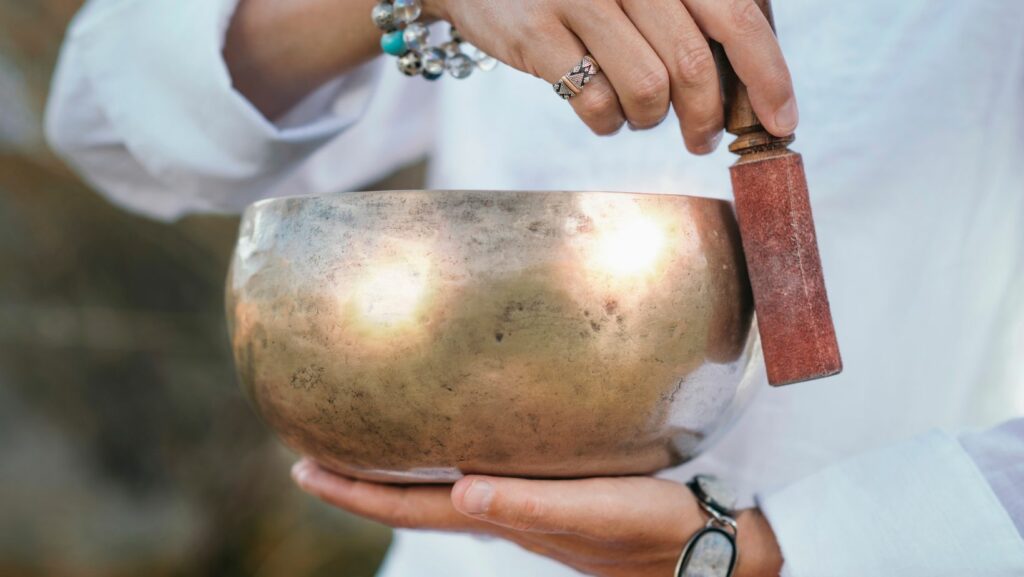Immerse yourself in the soothing world of sound baths, a rising trend in wellness circles. This ancient practice, now making a resurgence, offers a unique path to relaxation and healing, harnessing the power of sound to create an atmosphere of tranquility.
Good Vibes Sound Bath

“Good Vibes Sound Bath” epitomizes a tranquil realm, brimming with positive energy fostered through resounding waves of sound. Rooted in the ancient principles of sound healing, it specifically targets circulating “good vibes” or positive energy to the participants. Achieving this entails playing a special variety of instruments, Tibetan singing bowls and gongs included, tuned to specific frequencies that evoke good vibrations.
Each strum, beat, or reverberation penetrates participants’ bodies at a cellular level, arising a unique vibrational experience. Participants, enshrouded by waves of sound, often report experiencing profound relaxation, and transformations in their mental states. The immersion does more than just calming; it rejuvenates, heals, and aligns individuals with positive energy, hence the term “Good Vibes Sound Bath”.
However, promoting this positive energy doesn’t merely hinge on the practitioner’s skills – the participant’s openness to receive and absorb these good vibes also plays a crucial role. Guarded individuals may find that their barriers ward off the positivity that a sound bath aims to deliver. So, it’s key to approach this sonic journey with an open mind and heart, ready to receive the calming waves of positive energy.
The History and Traditional Use of Sound Baths

Sound baths boast a rich history spanning thousands of years. Originating in the ancient cultures of India and Tibet, these sonic wellness practices trace back to the pre-Buddhist era. Historical records show that healers and philosophers used these immersive sounds as a therapeutic tool, believing in their profound ability to induce mind-body harmony.
In traditional use, sound baths served several purposes. They played a pivotal role in religious ceremonies and meditative practices. Sound practitioners, through the use of instruments like Tibetan singing bowls and gongs, aimed to create an environment conducive for deep introspection.
Today, the tradition continues as sound baths gain mainstream acceptance in modern wellness and alternative therapy practices, offering tranquility to city dwellers and spiritual seekers alike. The ancient Tibetan wisdom behind sound bathing has been preserved, marrying ritual and relaxation in a bid to restore balance and promote well-being.
The Process of a Good Vibes Sound Bath Session
In a Good Vibes Sound Bath session, there’s a defined sequence that participants follow. They start by arriving at a tranquil space, free from distractions. Comfort is prioritized, as participants often lie down on yoga mats, equipped with pillows and blankets for added support.

The practitioner then commences the session, playing a variety of gentle, melodious instruments. These can include, but are not limited to, Tibetan singing bowls, gongs, crystal bowls, chimes, and tuning forks. The purpose of these specific musical instruments lies in their ability to produce healing sound frequencies, which, when paired with intentional vibrations, evoke a sense of serenity and peace.
Amid these soothing sounds, participants are encouraged to focus on their breathing, allowing the sound waves to wash over them. It’s during this time that the body starts absorbing the sound frequencies, promoting deeper relaxation.
Physical and Mental Benefits of Good Vibes Sound Bath
So it’s clear that the Good Vibes Sound Bath is more than just a wellness trend. It’s a transformative practice that promotes relaxation and healing, tapping into the power of sound to rejuvenate the mind and body. By immersing oneself in the soothing frequencies of Tibetan singing bowls, gongs, and other instruments, participants can experience profound relaxation and mental transformation.
The Good Vibes Sound Bath isn’t just about the sounds. It’s about the energy that’s circulated among participants, fostering a positive environment that resonates at a cellular level. This practice is steeped in ancient wisdom, yet it’s highly relevant in today’s fast-paced world, offering tranquility to those who seek it.

